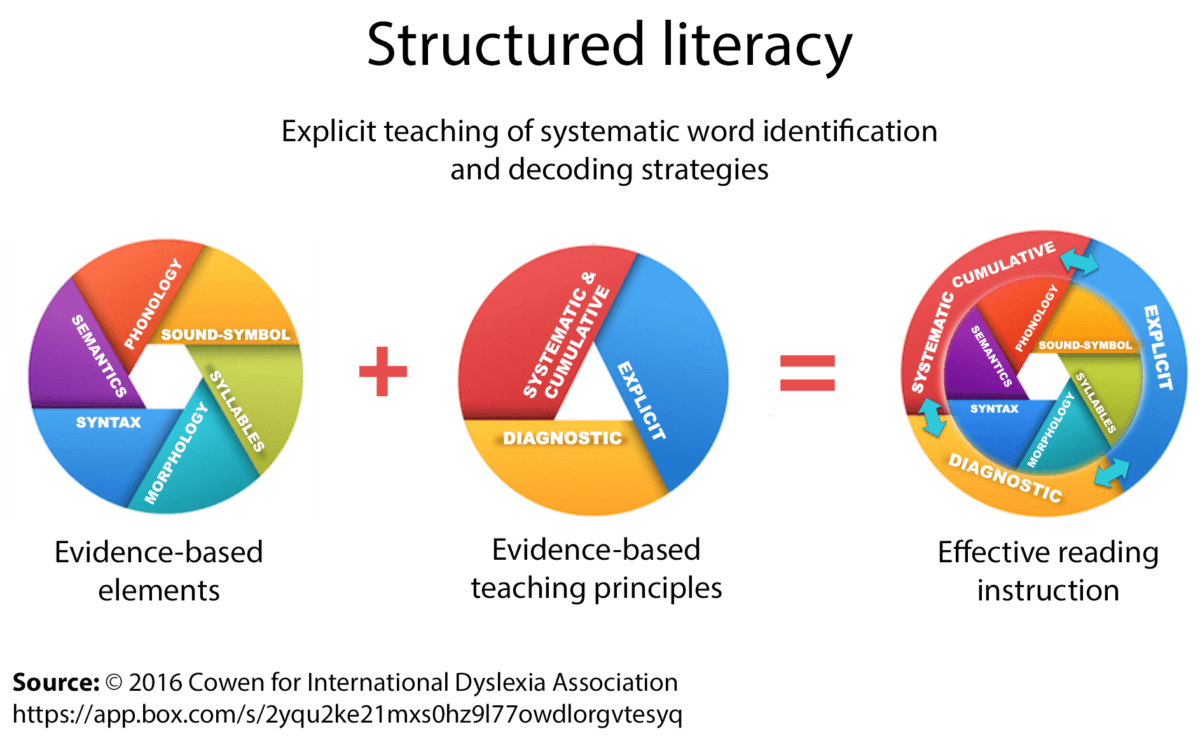News
Structured Literacy
What if all teachers were skilled in Structured Literacy?
At Hartwell The Educators University, all graduates complete courses in the Science of Reading that include Structured Literacy.
Structured Literacy is a comprehensive approach to reading instruction.
As K-12 educators, we understand the critical importance of effective reading instruction. Structured Literacy is an evidence-based approach that provides a comprehensive framework for teaching reading skills. According to the International Dyslexic Association and the Center for Effective Reading Instruction (IDA/CERI, 2018c), Structured Literacy integrates listening, speaking, reading, and writing, emphasizing the structure of language across various domains.
The principles of Structured Literacy guide us on how to teach reading effectively across all grade levels:
- Explicit Instruction with Modeling: Teachers provide clear, direct instruction and demonstrate the skills being taught.
- Systematic, Simple to Complex: Concepts are introduced in a logical sequence, progressing from simple to more complex.
- Cumulative: New concepts are linked to previously learned skills, with regular review and reinforcement.
- Diagnostic: Instruction is differentiated based on individual student needs.
- Multisensory: Multiple senses are engaged in the learning process, enhancing retention and understanding.
The key elements of Structured Literacy address the various components of language structure:
- Phonology: The study of speech sounds and their patterns.
- Orthography: The relationship between sounds and written symbols.
- Syntax: The rules governing the structure of sentences.
- Morphology: The study of meaningful word parts (prefixes, roots, suffixes).
- Semantics: The study of word meanings and their relationships.
By incorporating these elements into our reading instruction, we can provide a comprehensive and systematic approach that supports students’ development of essential literacy skills. Structured Literacy aligns with research-based best practices and has been shown to be effective for all learners, including those with dyslexia or other reading difficulties (Kilpatrick, 2015; Moats, 2020).
As educators, embracing Structured Literacy can empower us to deliver high-quality reading instruction that equips our students with the foundational skills necessary for academic success and lifelong learning.
About Hartwell – The Educators University
Hartwell is dedicated to empowering K-12 education leaders by fostering the growth of their people into competent and compassionate educators and leaders. Our mission is to ensure every child is taught by educators trained from a biblical worldview, emphasizing both excellence and empathy. Through our affordable online pathways to education degrees, we make careers in K-12 education accessible to everyone, enabling a new generation of teachers and leaders to inspire and educate future generations.
Discover more about our programs and scholarship opportunities at Hartwell.
References
International Dyslexic Association, & Center for Effective Reading Instruction. (2018). Structured Literacy: An introductory guide. IDA/CERI. Retrieved from https://dyslexiaida.org/structured-literacy/
Kilpatrick, D. A. (2015). Essentials of assessing, preventing, and overcoming reading difficulties. Wiley.
Moats, L. C. (2020). Speech to print: Language essentials for teachers (3rd ed.). Paul H. Brookes Publishing Co.

